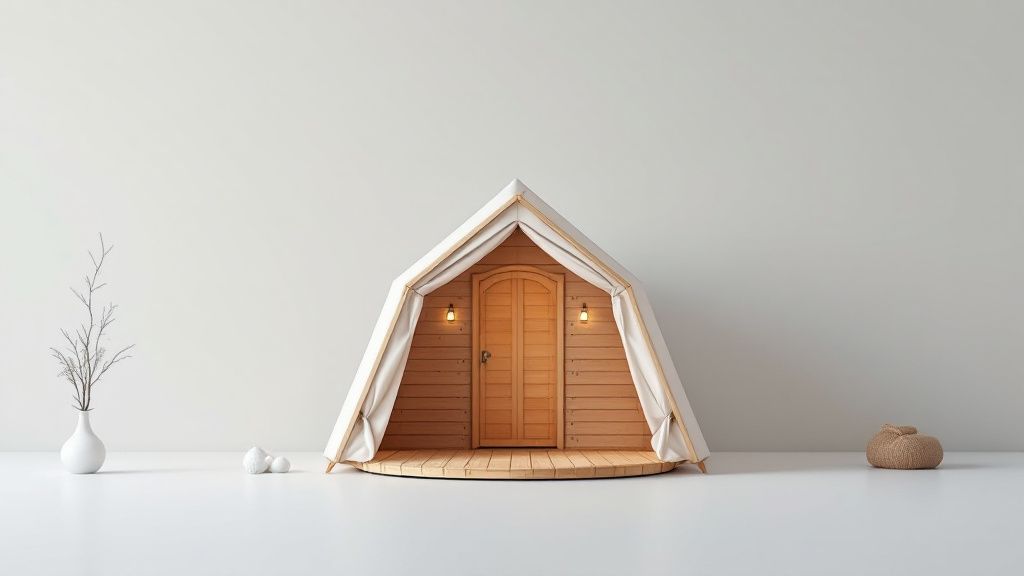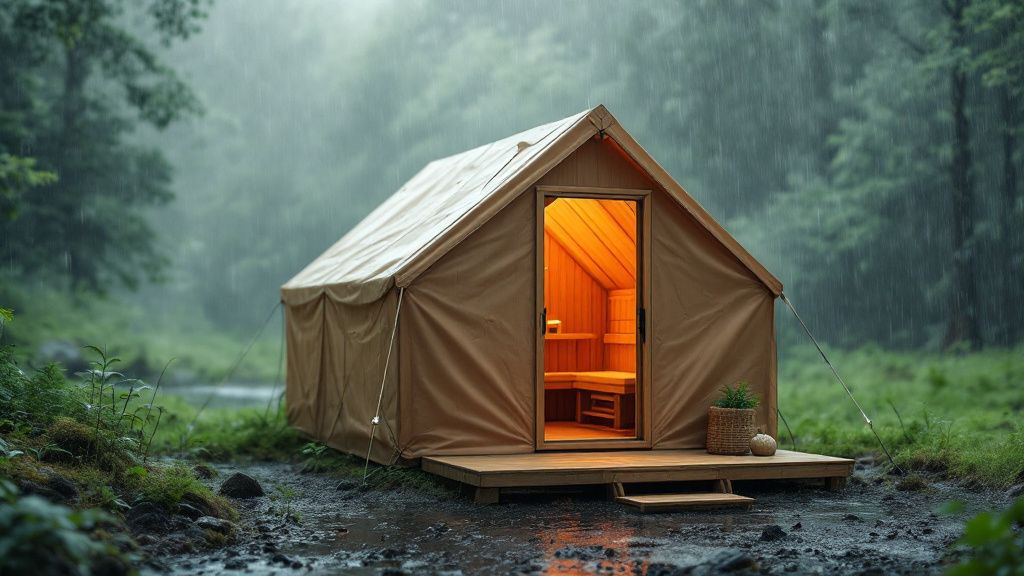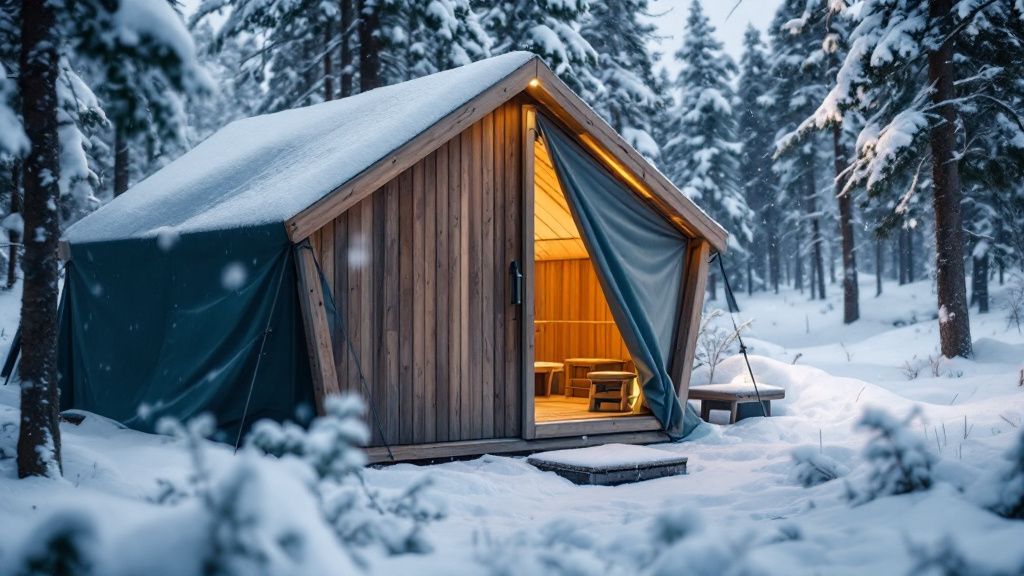Stepping into a portable sauna tent during a downpour might strike you as an intriguing idea. Rain pattering on the waterproof exterior creates a soothing ambiance, enhancing the relaxation experience. The gentle humming of nature outside blends with the warmth inside, creating an unparalleled spa-like feel. However, rain introduces factors worth considering. Moisture could permeate seams, potentially causing the interior to become damp. While the structure is designed to withstand various elements, you must ensure it is securely anchored, as wind often accompanies rain, imposing stress on the tent. Assessing weather conditions beforehand ensures a safe and pleasurable experience.

Understanding Sauna Tents and Their Functionality
Sauna tents are ingeniously designed to replicate the calming benefits of traditional saunas but offer flexibility and convenience. These tents are typically lightweight, making them easy to set up and transport. They come equipped with heaters that maintain a high temperature, allowing you to enjoy a detoxifying sweat session anywhere you choose, even in less conventional locations like your own backyard or campsite.
The structure of portable sauna tents includes a durable, often waterproof material to withstand various conditions. This is particularly beneficial when considering outdoor use. For example, a portable sauna tent on a rainy day can be an unexpected escape, as long as it's used with the right precautions to ensure safety from potential water ingress and stability challenges.
The functionality of these tents is a blend of comfort and efficiency. Inside, there are usually compact seats and enough space to move around, providing both personal and shared experiences. You can easily adjust the temperature, making sessions customizable to your personal preference, while the tent's design ensures minimal heat loss to the surrounding environment, maximizing energy efficiency.
When you consider using a sauna tent in the rain, the material and design play crucial roles. You should ensure that the seams are properly sealed and that the electric components are safe from water to avoid any hazards. The effectiveness of the sauna session largely depends on how well the tent can maintain its heat and protect its occupants.
Understanding these aspects empowers you to make informed decisions about when and how to use your portable sauna tent, ensuring that you make the most of its unique offerings regardless of weather conditions.

The Risks of Using a Sauna Tent in Rain
Using a sauna tent during rainfall presents some distinct risks that you should be aware of. Moisture infiltration is an immediate concern, particularly at the seams and zips. When water enters these areas, it can compromise the tent’s ability to maintain heat. This risk is higher in portable sauna tents that lack reinforced seams specifically designed to repel water.
Comparing using a sauna tent in clear weather versus in the rain highlights significant safety considerations. In clear conditions, stability issues and electrical hazards are minimized. Rain, however, introduces the risk of slipping due to wet surfaces and possible electrical malfunctions if the tent's power source or components are inadequately protected.
Wind often accompanies rain and can threaten the stability of your sauna setup. A gusty environment might topple over the tent, especially if winds exceed moderate levels. Ensure the tent is anchored properly to avoid tilting or complete collapse, which can both lead to injury. Investing in additional stakes and weight bags can be a prudent measure to safeguard against unexpected shifts.

What to Consider Before Using a Sauna Tent in Rain
Before using a sauna tent in the rain, assess the equipment’s waterproof capabilities, focusing on seams and closures. This ensures protection against moisture infiltration. Address the power supply for the sauna with attention to covering electric outlets or batteries to avoid contact with water, thus maintaining safety while experiencing the soothing benefits of heat therapy in less-than-ideal weather conditions.
Safety is paramount, so check the stability of the tent when setting up on potentially wet and unstable ground. Consider using non-slip mats or securing the base with extra weight. According to recent studies, secure anchoring and surface stability reduce the risk of accidental slips or tent collapse, particularly under wind influence, highlighting the importance of preparation.
Understand your personal health conditions. Sauna use elevates your heart rate and core body temperature, and adding rainy, potentially chilly weather could intensify stress on the body. Consulting with a healthcare provider is advisable. Recognizing any physical limitations or vulnerabilities helps ensure that your experience remains beneficial rather than risky.
Evaluate the logistics of post-use procedures, such as drying the tent to prevent mildew and maintaining its condition for future uses. A routine check after each session guarantees longevity. Keeping this in mind ensures that you not only enjoy your sauna sessions regardless of the weather but also keep your portable sauna tent in top condition over time.

Best Practices for Using Sauna Tents in Challenging Weather
When using a sauna tent in challenging weather, secure the setup by anchoring it to withstand wind and rain. This can involve extra stakes, weighted bags, or positioning it near natural windbreaks like shrubs or walls. Ensuring stability prevents the tent from shifting unexpectedly, which could otherwise compromise both safety and comfort during your sauna session.
Lighting the tent should be done cautiously, using low-voltage or battery-operated options. This minimizes the risk of electrical hazards. Additionally, ensure that all electric components are waterproofed or adequately shielded from potential rain exposure.
Be mindful of the time you spend inside the sauna to manage internal temperature. Challenging weather can unexpectedly affect your body’s regulation, so shorter sessions might be more beneficial. This approach helps maintain your well-being by preventing overheating, especially when rain or wind lowers your body’s external exposure temperature quickly after exiting the sauna.
Post-session care of your sauna tent is crucial. Quickly dry all moisture-exposed surfaces to prevent mold and mildew formation. Proper cleaning and drying maintain not only hygiene but the overall durability of the portable sauna tent. Responsible maintenance greatly contributes to the longevity of the tent, allowing for enjoyable future saunas without the threat of deterioration due to previous rain exposure.

